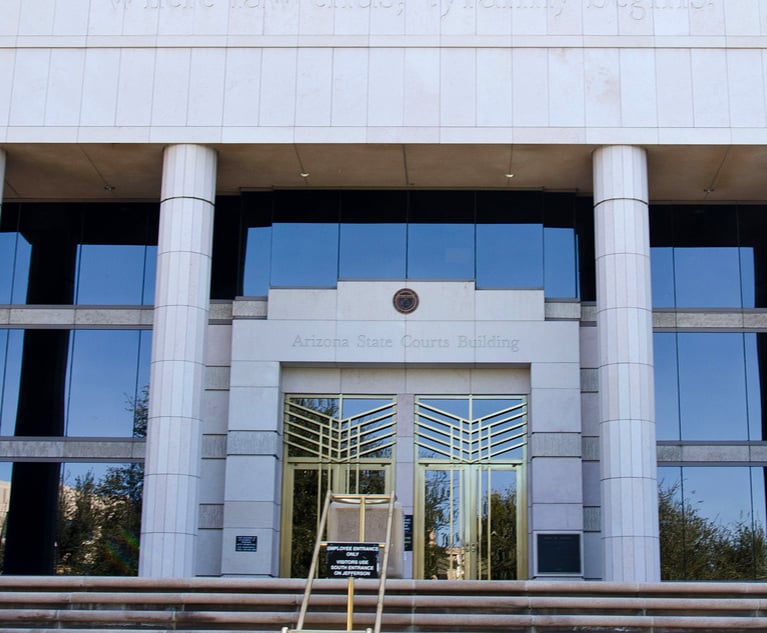The great fees debate
Late last year, members of the Commerce and Industry (C&I) Group of leading in-house lawyers spelled out their feelings on legal services billing in a report produced in conjunction with accountancy firm BDO Stoy Hayward. The report raises some important points. As its title 'Stop the Clock' implies, large numbers of in-house lawyers expressed dissatisfaction with the traditional way that law firms charge for their services - by the hour. Some eight in 10 of the in-house lawyers surveyed said time-based billing provided no incentive for law firms to be quick and efficient and the major perceived problem with this system, says the report, is that billing based on time spent fails to reflect the real value of the work involved, usually to the advantage of the law firm. Consequently, the report claims, the cost of legal services has been rising exponentially at a time when general counsel are under internal pressure to keep their budgets under control.
February 06, 2008 at 07:43 PM
5 minute read
Late last year, members of the Commerce and Industry (C&I) Group of leading in-house lawyers spelled out their feelings on legal services billing in a report produced in conjunction with accountancy firm BDO Stoy Hayward. The report raises some important points. As its title 'Stop the Clock' implies, large numbers of in-house lawyers expressed dissatisfaction with the traditional way that law firms charge for their services – by the hour. Some eight in 10 of the in-house lawyers surveyed said time-based billing provided no incentive for law firms to be quick and efficient and the major perceived problem with this system, says the report, is that billing based on time spent fails to reflect the real value of the work involved, usually to the advantage of the law firm. Consequently, the report claims, the cost of legal services has been rising exponentially at a time when general counsel are under internal pressure to keep their budgets under control.
Instead, almost two-thirds of those in-house lawyers surveyed propose greater use of value-based fees. Indeed, 68% said they would be happy to pay more for high-value legal work, provided that law firms were willing to charge less for more routine instructions.
While the debate about new and better approaches will no doubt continue, there is plenty that clients and law firms can already do to improve the way legal services are billed.
 At the top of the list is the issue of how a matter is managed. The hourly rate is only one of a number of factors that contribute towards the final bill and is often not even the most important one. Usually of more relevance than the headline rate is the size and mix of the firm's team, specifically how many people are deployed on a piece of work, and at what levels of seniority.
At the top of the list is the issue of how a matter is managed. The hourly rate is only one of a number of factors that contribute towards the final bill and is often not even the most important one. Usually of more relevance than the headline rate is the size and mix of the firm's team, specifically how many people are deployed on a piece of work, and at what levels of seniority.
How they are organised, managed and led is also crucial if clients are to receive real value for money. The involvement of a partner at the right times is vital to ensure things are working efficiently and that team members are not wasting their time (and their client's money) on things that do not matter. These things sound fairly obvious – but the reality can be very different. Why? Because, firstly, lawyers are notoriously bad at project management; and secondly, some law firms throw people at matters because that is how they do things. Indeed, firms that operate with high gearing (i.e. a relatively large number of associates per partner) almost have to work in this way – it is part of their business model. This in turn means partner time on a matter can be a rare commodity. Finally, clients often find it difficult to identify where and when things are not working as efficiently as they should be.
Ultimately, it falls to the law firm to ensure that work is executed efficiently. But clients can help themselves more – they can insist on narratives which include detailed breakdowns of who spent what time on a matter and what they did, as well as a provisional bill before the final invoice is delivered. In my experience this can make a significant contribution to the transparency of the way a matter is managed, as well as to the billing process – knowing that the client will see this level of detail focuses the mind wonderfully on how you spend your time. It also helps avoid surprises and promotes good housekeeping.
Moreover, as C&I Group members rightly observe, the closer and more open the relationship between law firm and client, the more value can be extracted from that relationship. A strong two-way relationship based on trust will create the environment for a flexible approach to billing and a menu of options that might include hourly billing at agreed rates, blended rates, capped fees and value-based fees. In this kind of relationship, clients can feel comfortable asking their lawyers to deliver something appropriate within a pre-set budget and, conversely, law firms are able to ask the client how much they would like to spend.
The nature of the relationship is also central to achieving a closer correlation between the value of the work and the fee. The report claims that clients are willing to pay higher fees for valuable work provided they are charged less for lower value work. There is no magic in this N it comes down to strong relationships with good conversations. External lawyers ought to be able to provide a 'quick and dirty' review or a desktop view on something that does not merit significant legal expense. But they are more likely to be able to do this if they have the right relationship with the client.
Ultimately if, as the report indicates, clients feel they are not getting what they want, they should vote with their feet. After all, there is little incentive for offending firms to improve if they know that grumbling clients will nevertheless return to them again and again.
In conclusion, clients who are dissatisfied with their lawyers' billing should examine closely the relationship they have with their lawyers. In my experience the quality of the relationship will invariably reflect the client's feelings about billings and fees.
Sunil Gadhia is chief executive at Stephenson Harwood.
This content has been archived. It is available through our partners, LexisNexis® and Bloomberg Law.
To view this content, please continue to their sites.
Not a Lexis Subscriber?
Subscribe Now
Not a Bloomberg Law Subscriber?
Subscribe Now
NOT FOR REPRINT
© 2025 ALM Global, LLC, All Rights Reserved. Request academic re-use from www.copyright.com. All other uses, submit a request to [email protected]. For more information visit Asset & Logo Licensing.
You Might Like
View All

Some Elite Law Firms Are Growing Equity Partner Ranks Faster Than Others
4 minute read
KPMG's Bid To Practice Law in US On Hold As Arizona Court Exercises Caution
Trending Stories
Who Got The Work
J. Brugh Lower of Gibbons has entered an appearance for industrial equipment supplier Devco Corporation in a pending trademark infringement lawsuit. The suit, accusing the defendant of selling knock-off Graco products, was filed Dec. 18 in New Jersey District Court by Rivkin Radler on behalf of Graco Inc. and Graco Minnesota. The case, assigned to U.S. District Judge Zahid N. Quraishi, is 3:24-cv-11294, Graco Inc. et al v. Devco Corporation.
Who Got The Work
Rebecca Maller-Stein and Kent A. Yalowitz of Arnold & Porter Kaye Scholer have entered their appearances for Hanaco Venture Capital and its executives, Lior Prosor and David Frankel, in a pending securities lawsuit. The action, filed on Dec. 24 in New York Southern District Court by Zell, Aron & Co. on behalf of Goldeneye Advisors, accuses the defendants of negligently and fraudulently managing the plaintiff's $1 million investment. The case, assigned to U.S. District Judge Vernon S. Broderick, is 1:24-cv-09918, Goldeneye Advisors, LLC v. Hanaco Venture Capital, Ltd. et al.
Who Got The Work
Attorneys from A&O Shearman has stepped in as defense counsel for Toronto-Dominion Bank and other defendants in a pending securities class action. The suit, filed Dec. 11 in New York Southern District Court by Bleichmar Fonti & Auld, accuses the defendants of concealing the bank's 'pervasive' deficiencies in regards to its compliance with the Bank Secrecy Act and the quality of its anti-money laundering controls. The case, assigned to U.S. District Judge Arun Subramanian, is 1:24-cv-09445, Gonzalez v. The Toronto-Dominion Bank et al.
Who Got The Work
Crown Castle International, a Pennsylvania company providing shared communications infrastructure, has turned to Luke D. Wolf of Gordon Rees Scully Mansukhani to fend off a pending breach-of-contract lawsuit. The court action, filed Nov. 25 in Michigan Eastern District Court by Hooper Hathaway PC on behalf of The Town Residences LLC, accuses Crown Castle of failing to transfer approximately $30,000 in utility payments from T-Mobile in breach of a roof-top lease and assignment agreement. The case, assigned to U.S. District Judge Susan K. Declercq, is 2:24-cv-13131, The Town Residences LLC v. T-Mobile US, Inc. et al.
Who Got The Work
Wilfred P. Coronato and Daniel M. Schwartz of McCarter & English have stepped in as defense counsel to Electrolux Home Products Inc. in a pending product liability lawsuit. The court action, filed Nov. 26 in New York Eastern District Court by Poulos Lopiccolo PC and Nagel Rice LLP on behalf of David Stern, alleges that the defendant's refrigerators’ drawers and shelving repeatedly break and fall apart within months after purchase. The case, assigned to U.S. District Judge Joan M. Azrack, is 2:24-cv-08204, Stern v. Electrolux Home Products, Inc.
Featured Firms
Law Offices of Gary Martin Hays & Associates, P.C.
(470) 294-1674
Law Offices of Mark E. Salomone
(857) 444-6468
Smith & Hassler
(713) 739-1250









